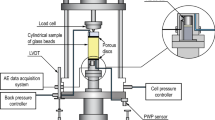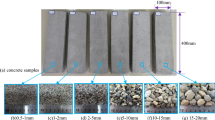Abstract
Sound in the ultrasonic (20 to 1,000 kHz) range emitted during high-shear granulation was recorded and analyzed using multivariate techniques in order to assess the relationship between variations in the physical properties of the obtained granules and the evolution of acoustic emissions taking place during their formation. The acoustic signal analysis was preformed on two different granulators. A four-component model was obtained from the analysis and was capable of predicting the particle size distribution of the granules based on a 13 sieve cut measurement covering the range of 53–1,180 μm. The average error of prediction was less than 2%. Acoustic emission also proved useful as a predictor of granule moisture content. The final granule moisture content could be predicted with a root-mean-square error of prediction of 5.76% and 1.9% in the two different granulators evaluated in this investigation. The acoustic signals emitted during wet granulation contain the information necessary to make quantitative assessments of the changes in water content, particle size, and the particle size distribution of the granules produced by the process.











Similar content being viewed by others
References
Kaiser J. Results and conclusions from measurements of sound in metallic materials under tensile stress in. Munich: Technical University of Munich; 1950.
Waring MJ, Rubinstein MH, Howard JR. Acoustic-emission of pharmaceutical materials during compression. Int J Pharm. 1987;36:29–36.
Waring MJ, Rubinstein MH, Howard JR. Acoustic-emission of pharmaceutical materials—the effect of compression speed, ejection, lubrication and tablet weight. Int J Pharm. 1987;40:15–22.
Hakanen A, Laine E. Acoustic characterization of a microcrystalline cellulose powder during and after its compression. Drug Dev Ind Pharm. 1995;21:1573–82.
Hakanen A, Laine E, Jalonen H, Linsaari K, Jokinen J. Acoustic-emission during powder compaction and its frequency spectral-analysis. Drug Dev Ind Pharm. 1993;19:2539–60.
Salonen J, Salmi K, Hakanen A, Laine E, Linsaari K. Monitoring the acoustic activity of a pharmaceutical powder during roller compaction. Int J Pharm. 1997;153:257–61.
Whitaker M, Baker GR, Westrup J, et al. Application of acoustic emission to the monitoring and end point determination of a high shear granulation process. Int J Pharm. 2000;205:79–91.
Briens L, Daniher D, Tallevi A. Monitoring high-shear granulation using sound and vibration measurements. Int J Pharm. 2007;331:54–60.
Thorne PD, Foden DJ. Generation of underwater sound by colliding spheres. J Acoust Soc Am. 1988;84:2144–52.
Tilly PJ, Porada S, Scruby CB, Lidington S. Monitoring of mixing processes using acoustic emission. In: Harnby N, Benkreira H, Carpenter KJ, Mann R, editors. Fluid Mixing III. Rugby, Warks: The Institution of Chemical Engineers; 1988.
Leach MF, Rubin GA, Williams JC. Particle-size determination from acoustic emissions. Powder Technol. 1977;16:153–8.
Leach MF, Rubin GA. Size analysis of particles of irregular shape from their acoustic emissions. Powder Technol. 1978;21:263–67.
Leach MF, Rubin GA, Williams JC. Particle-size distribution characterization from acoustic emissions. Powder Technol 1978;19:157–67.
Leach MF, Rubin GA, Williams JC. Analysis of a gaussian size distribution of rigid particles from their acoustic-emission. Powder Technol. 1978;19:189–95.
Halstensen M, Esbensen K. New developments in acoustic chemometric prediction of particle size distribution—‘the problem is the solution’. J Chemom. 2000;14:463–81.
Ericksson L, Johansson E, Kettaneh-Wold N, Wold S. Multi- and megavariate data analysis. Umea: Umetrics Academy; 2001.
Acknowledgments
National Science Foundation 000364-EEC, Dane O. Kildsig Center for Pharmaceutical Processing Research. We thank Dr. Vincent Hoon for assistance with the FFT analysis.
Author information
Authors and Affiliations
Corresponding author
Rights and permissions
About this article
Cite this article
Papp, M.K., Pujara, C.P. & Pinal, R. Monitoring of High-shear Granulation using Acoustic Emission: Predicting Granule Properties. J Pharm Innov 3, 113–122 (2008). https://doi.org/10.1007/s12247-008-9030-6
Published:
Issue Date:
DOI: https://doi.org/10.1007/s12247-008-9030-6




